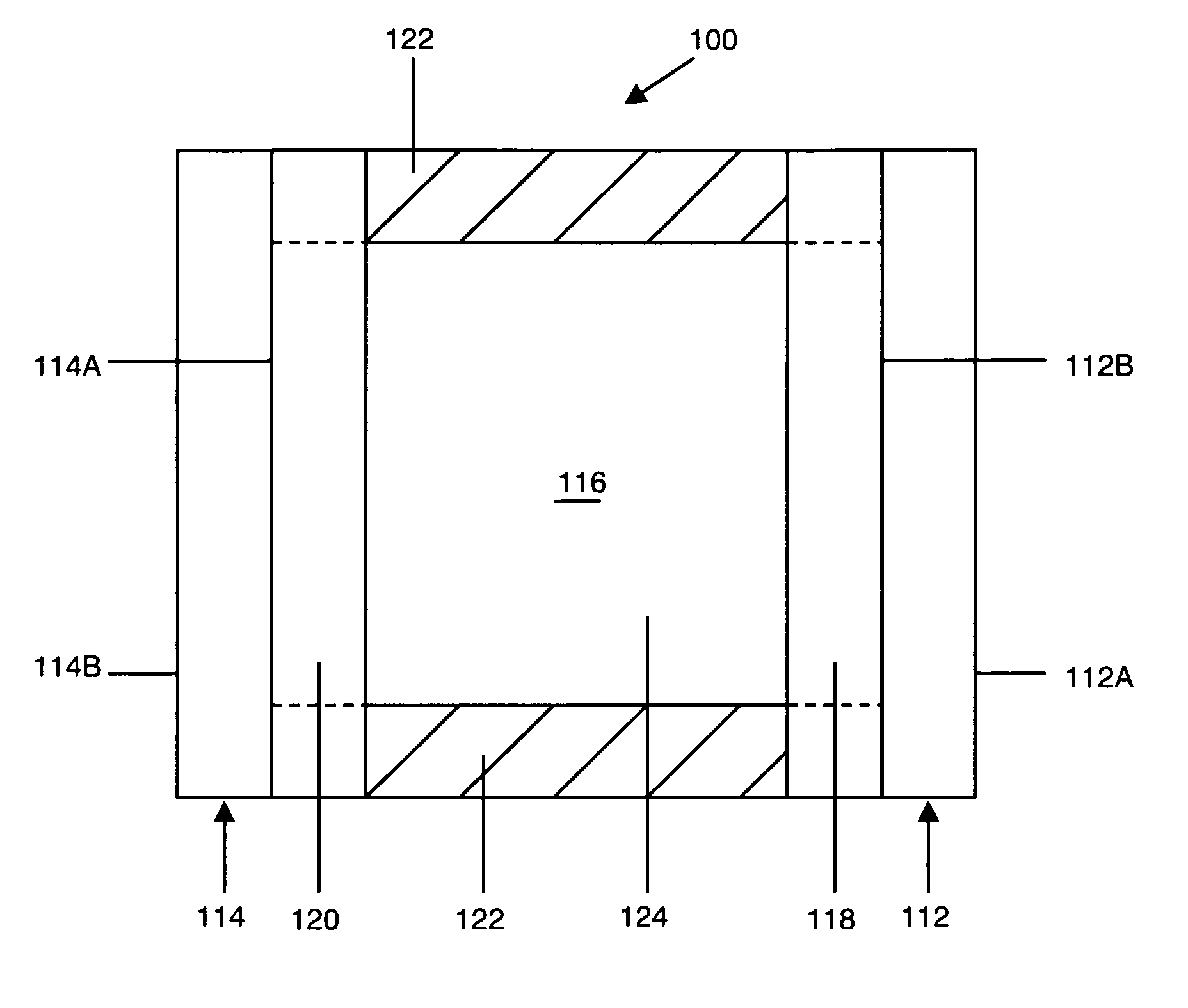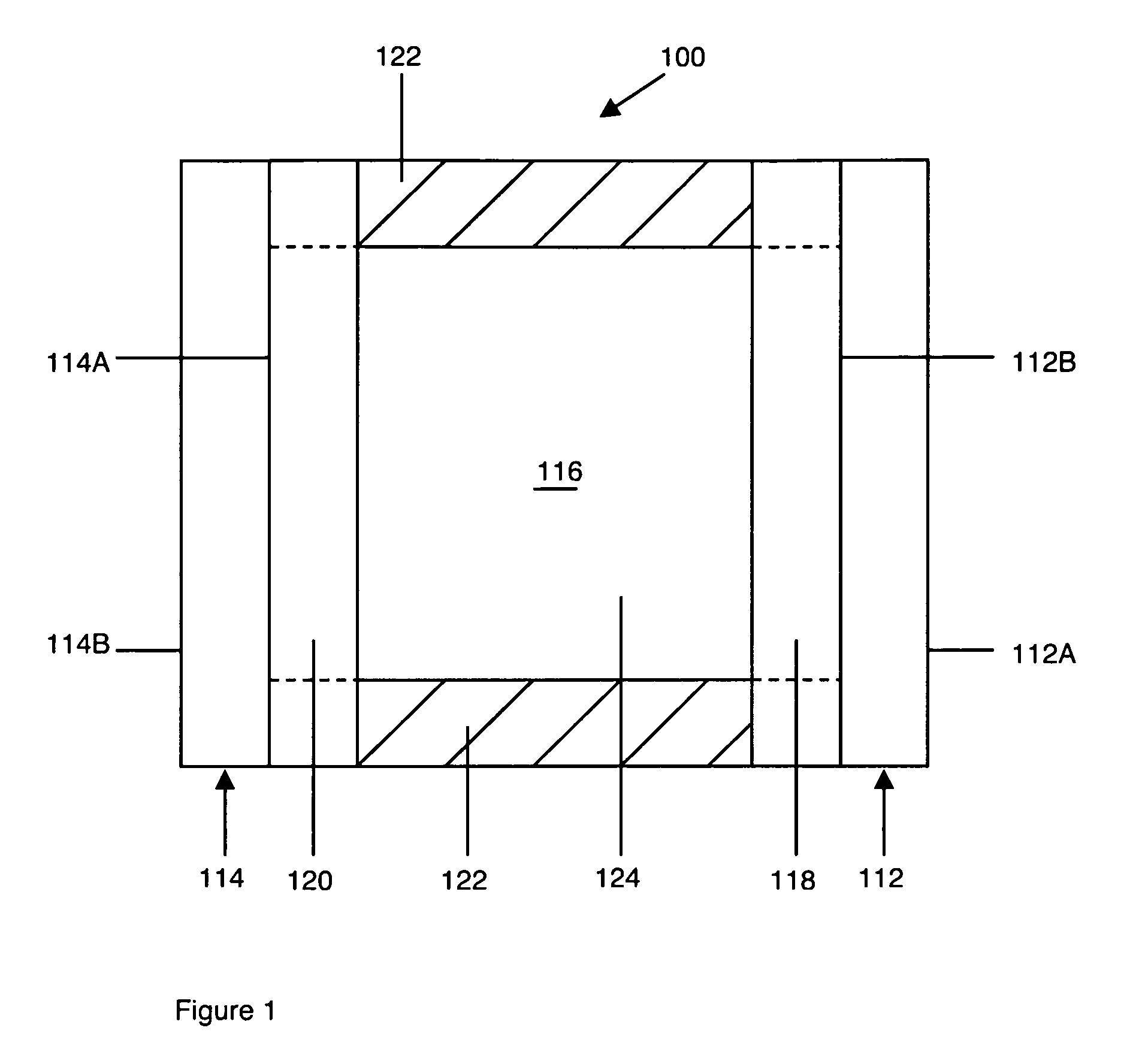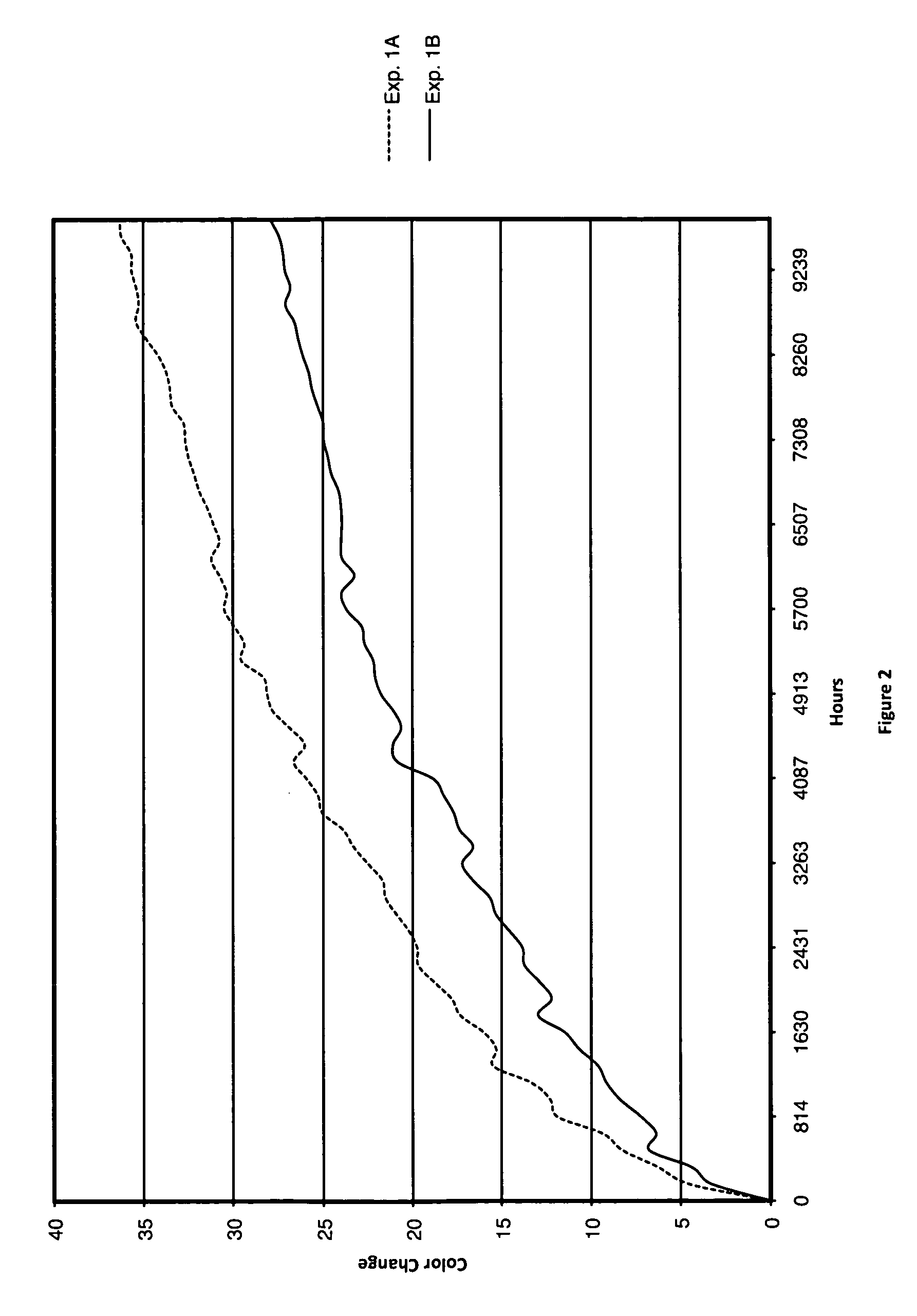Electrochromic compounds and associated media and devices
a technology of electrochromic compounds and associated media, applied in the field of electrochromic compounds, can solve the problems of undesirable residual color development within the electrochromic medium, poor thermal and/or uv stability of 1,1′-dibenzyl-4,4′-bipyridinium bis(tetrafluoroborate), and undesirable coloration of the cathodic viologen compound
- Summary
- Abstract
- Description
- Claims
- Application Information
AI Technical Summary
Benefits of technology
Problems solved by technology
Method used
Image
Examples
example 1
Synthesis of 1,1′-di[2-(ethyl)hexyl]-4,4′-dipyridinium bis(tetrafluoroborate)
[0061]A two liter three-neck round-bottom flask fitted with a reflux condenser, mechanical stirrer, and heating mantle was charged with 386 grams (g) of 2-(ethyl)hexyl bromide, 78 g of 4,4′-dipyridal and 1.0 liter (L) of acetonitrile. While being agitated under positive nitrogen pressure, the reaction slurry was heated to reflux. After 144 hours (h) the reaction was cooled to room temperature, and the resulting 1,1′-di[2-(ethyl)hexyl]-4,4′-dipyridinium dibromide salt was obtained via vacuum filtration. The dibromide salt wet cake was first washed with 500 milliliters (ml) of acetonitrile, and subsequently washed with 500 ml of acetone.
[0062]Next, the resulting yellow filter cake was air-dried and yielded 93.1% of the dibromide salt. The dibromide salt was added back to the 2 L reaction flask, along with 200 ml of acetone, 500 ml of deionized water, and 500 ml of 40% sodium tetrafluoroborate aqueous solution...
example 2
Synthesis of 1,1′-di(neopentyl)-4,4′-dipyridinium bis(tetrafluoroborate)
[0063]1,1′-di(neopentyl)-4,4′-dipyridinium bis(tetrafluoroborate) is prepared by refluxing a solution of acetonitrile, containing 4,4′ dipyridal and 2,4-dinitro-chlorobenzene and then reacting the 1,1′-di(2,4-dinitrophenyl)-4,4-dipyridinium dichloride salt with neopentylamine.
[0064]A 500 ml three-neck round-bottom flask is charged with 15.6 g (100 mmole) of 4,4′ dipyridal, 81.0 g (400 mmole) of 2,4 dinitro-chlorobenzene and 250 ml of acetonitrile. The resulting solution is heated to reflux for 72 h and the reaction mixture is cooled to room temperature. The reaction product, 1,1-di(2,4-dinitrophenyl)-4,4′-dipyridinium dichloride is filtered off and washed with 100 ml of acetonitrile followed by 100 ml of acetone, and is then allowed to air-dry.
[0065]Next a 500 ml three-neck round-bottom flask is charged 100 ml of water, 100 ml of N,N′dimethylformamide (DMF) and 26.1 g (300 mmole) of neopentyl amine. The solution...
example 3
Synthesis of 1,1′-di(1-adamantane methyl)-4,4′-dipyridinium bis(tetrafluoroborate)
[0068]1,1′-di(adamantly methyl)-4,4′-dipyridinium-bis(tetrafluoroborate) is prepared in a similar manner to 1,1′-di(neopentyl)-4,4′-dipyridinium bis(tetrafluoroborate) as described herein above, except that adamantly methyl amine is utilized instead of the neopentyl amine.
[0069]In an attempt to eliminate any ambiguity associated with the nomenclature of the compounds identified herein, structures of the same are provided herein below with alpha (α) and beta (β) designations:
[0070]
1,1′-di[2-(ethyl)hexyl]-4,4′-dipyridinium bis(tetrafluoroborate)
[0071]
1,1′-di(neopentyl)-4,4′-dipyridinium bis(tetrafluoroborate)
[0072]
1,1′-di(1-adamantane methyl)-4,4′-dipyridinium bis(tetrafluoroborate)
[0073]In support of the present invention, thermal experimentation was conducted wherein electrochromic devices were prepared which comprised prior art 1,1′-dioctyl-4,4′-bipyridinium bis(tetrafluoroborate) as the cathodic elec...
PUM
| Property | Measurement | Unit |
|---|---|---|
| thick | aaaaa | aaaaa |
| thickness | aaaaa | aaaaa |
| thickness | aaaaa | aaaaa |
Abstract
Description
Claims
Application Information
 Login to View More
Login to View More - R&D
- Intellectual Property
- Life Sciences
- Materials
- Tech Scout
- Unparalleled Data Quality
- Higher Quality Content
- 60% Fewer Hallucinations
Browse by: Latest US Patents, China's latest patents, Technical Efficacy Thesaurus, Application Domain, Technology Topic, Popular Technical Reports.
© 2025 PatSnap. All rights reserved.Legal|Privacy policy|Modern Slavery Act Transparency Statement|Sitemap|About US| Contact US: help@patsnap.com



